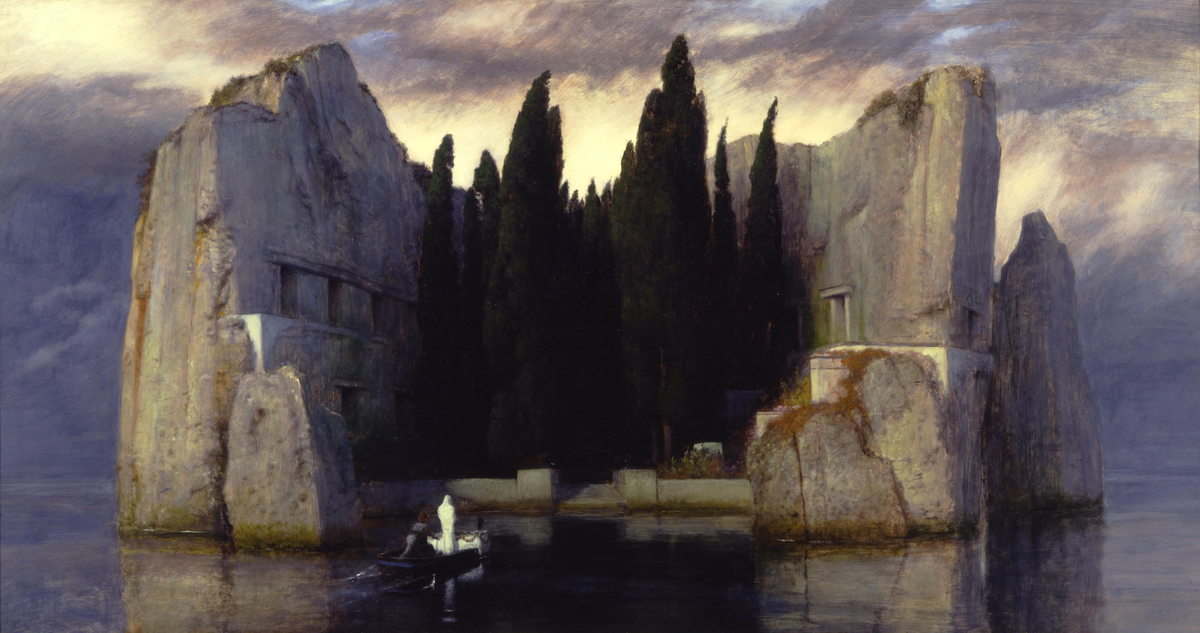Source

Source: Arnold Böcklin, Die
Toteninsel, oil on wood panel, 1883. Alter Nationalgalerie,
Berlin.
https://id.smb.museum/object/967648/die-toteninsel
The work of Swiss painter Arnold Böcklin (1827-1901) became enormously popular in Germany, and by the late 1890s German critics named him the “most German painter of the century.” His paintings appealed to the educated middle classes [Bildungsbürgertum] but also to a broader public: while Böcklin drew on classical themes for his painting, he sought to move beyond neoclassicism by infusing themes of antiquity with a new emotional appeal.
By far his most famous painting is Die Toteninsel [The Isle of the Dead], painted in five different versions. The third version, currently in the Alte Nationalgalerie in Berlin, became the most well-known, as it was so widely reproduced. The painting depicts a desolate and rocky island, towards which an oarsman steers a boat, in the front of which a shrouded figure in white stands before a coffin. The tiny island is covered with cypress trees and rocky cliffs, into which are carved several sepulchral portals.
In 1890, Max Klinger created a black-and-white etching based upon Böcklin's painting, and reproductions of Böcklin’s and of Klinger’s versions both circulated widely. It was said that a reproduction of The Isle of the Dead hung in every bourgeois living room. Sigmund Freud kept a reproduction in his office; Vladimir Lenin hung a version above his bed; and it was a favorite painting of Adolf Hitler. Part of Böcklin’s appeal around 1900 was the way that he could be seen to represent both “the modern” and “the German” in art.

Source: Arnold Böcklin, Die
Toteninsel, oil on wood panel, 1883. Alter Nationalgalerie,
Berlin.
https://id.smb.museum/object/967648/die-toteninsel
Staatliche Museen zu Berlin, Nationalgalerie / Andres Kilger
Suzanne Marchand, “Arnold Böcklin and the Problem of German Modernism” in Germany at the Fin de Siècle: Culture, Politics, and Ideas, ed. Suzanne Marchand and David Lindenfeld, Baton Rouge, 2004.